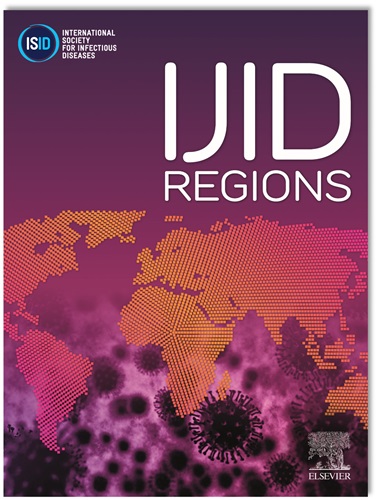Why do echinocandins fail? Identifying key predictors to improve clinical outcomes of candida bloodstream infections: a retrospective multicenter cohort study
IF 4.3
2区 医学
Q1 INFECTIOUS DISEASES
引用次数: 0
Abstract
Background
Echinocandins represent first-line therapy for Candida Bloodstream Infections (C-BSIs). Incidence of treatment failure (TF) remains high with unclear risk factors. Aim: to evaluate predictors of echinocandin TF for C-BSIs.
Methods
Retrospective observational multicenter study, enrolling all patients with C-BSI treated with echinocandin from 01/06/2020 to 30/06/2023 in four Italian Hospitals.
Primary outcome
to evaluate predictors of TF defined as a composite of: i)transfer to ICU or any worsening in organ dysfunction at day 5 of therapy; ii)Persistent C-BSI; iii)Echinocandin discontinuation for any reason; iv)Onset of a new infection site by Candida spp. during treatment.
Secondary outcome
90-day all-cause mortality. Cox regression and treatment-effect were used, along with inverse-probability of treatment-weighting (IPTW) to adjust cohort treatment-assignment bias.
Results
Overall, 218 patients were enrolled. Median (q1-q3) age was 72 (56-78), 55% male. In 33% and 63% of cases, septic shock at presentation and C-BSIs by non-albicans strains were reported. Importantly, 68 (31%) patients received high dosage echinocandin (“HDE”: increase of 30-50% of standard dosage), according to clinical judgement. Eighty-two (38%) experienced TF; 90-day all-cause mortality was 30%, significantly higher in TF-group (P < 0.001). At multivariable Cox-regression analysis, obesity, septic shock, and increased MIC to echinocandins were predictors of TF; presence of removable intravascular devices and HDE resulted protective. After adjustment by inverse-probability of treatment-weighting, HDE still reduced TF risk in patients admitted to the ICU, with SOFA score<6, BMI>30, or with serum albumin concentration ≤2,5gr/dL.
Conclusion
Several clinical and microbiological factors could influence the echinocandin TF. Interestingly, in patients at risk for echinocandin TF, HDE may be protective.
为什么电子邮件会失败?确定关键预测因素以改善念珠菌血流感染的临床结果:一项回顾性多中心队列研究。
背景:棘白菌素是治疗念珠菌血流感染(C-BSIs)的一线药物。治疗失败(TF)的发生率仍然很高,危险因素不明。目的:探讨棘白素TF对c - bsi的预测因素。方法:回顾性观察性多中心研究,纳入2020年6月1日至2023年6月30日在意大利四家医院接受棘白菌素治疗的所有C-BSI患者。主要结局:评估TF的预测因素,定义为:i)在治疗第5天转入ICU或器官功能障碍恶化;(二)持续C-BSI;iii)因任何原因停用棘白菌素;iv)在治疗期间出现念珠菌感染的新部位。次要结局:90天全因死亡率。采用Cox回归和治疗效应,以及治疗加权逆概率(IPTW)来调整队列治疗分配偏倚。结果:总共有218名患者入组。中位(第一季度-第三季度)年龄为72岁(56-78岁),55%为男性。在33%和63%的病例中,报告了脓毒性休克和非白色念珠菌菌株引起的c - bsi。重要的是,根据临床判断,68例(31%)患者接受了高剂量棘白菌素治疗(“HDE”:比标准剂量增加30-50%)。82例(38%)发生TF;90天全因死亡率为30%,tnf组(p30)或血清白蛋白浓度≤2.5 gr/dL显著高于tnf组(p < 0.05)。结论:多种临床和微生物因素可影响棘白菌素TF。有趣的是,对于有棘白菌素TF风险的患者,HDE可能具有保护作用。
本文章由计算机程序翻译,如有差异,请以英文原文为准。
求助全文
约1分钟内获得全文
求助全文
来源期刊
CiteScore
18.90
自引率
2.40%
发文量
1020
审稿时长
30 days
期刊介绍:
International Journal of Infectious Diseases (IJID)
Publisher: International Society for Infectious Diseases
Publication Frequency: Monthly
Type: Peer-reviewed, Open Access
Scope:
Publishes original clinical and laboratory-based research.
Reports clinical trials, reviews, and some case reports.
Focuses on epidemiology, clinical diagnosis, treatment, and control of infectious diseases.
Emphasizes diseases common in under-resourced countries.

 求助内容:
求助内容: 应助结果提醒方式:
应助结果提醒方式:


